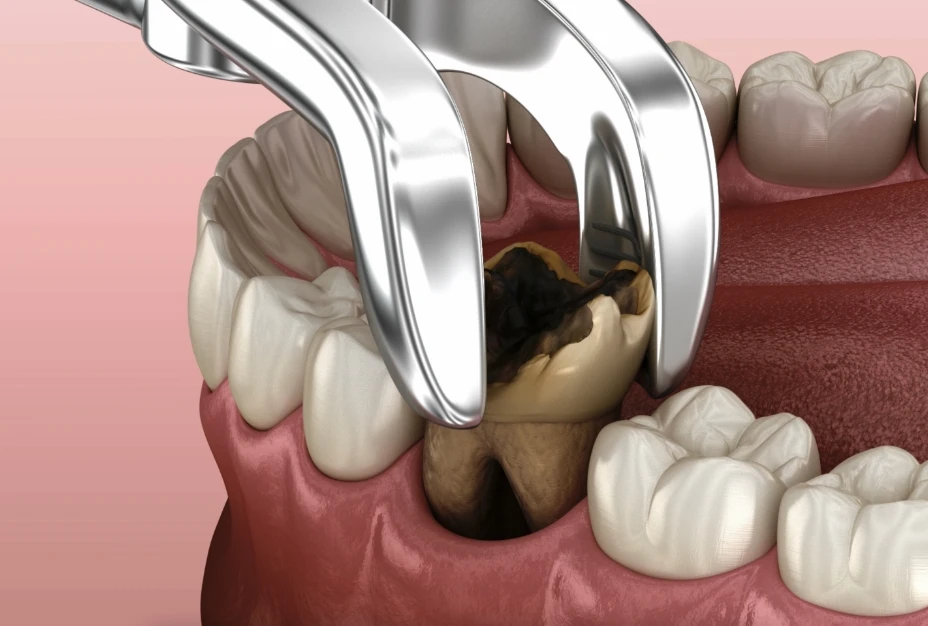
When might you need a tooth extraction?
You might need to have a tooth pulled out, in other words, tooth extraction, if you have:
- severe gum disease
- a deep infection in a tooth
- a broken tooth
- orthodontic reasons
- problems with a wisdom tooth
What happens during a tooth extraction?
If you need a tooth to be removed, your dentist will usually give you a local anaesthetic to numb your mouth so you don’t feel pain. Your dentist will then use a special tool to loosen the tooth in the gum. Once the tooth is loose, they will remove it with forceps.
If your tooth extraction is more complicated such as when teeth are broken under the gum line or only partially erupted, your dentist will perform a surgical extraction, which involves an incision made to the gum and may or may not require the removal of bone surrounding the tooth to provide access to the tooth. The tooth is then removed using forceps. Sometimes the tooth may also need to be divided into parts to allow it to be removed more easily.
Once the tooth is removed, the gum will require sutures to keep it in place as it heals.
What happens after a tooth extraction?
After your tooth has been removed, your dentist need to make sure the gum socket is clean. You might have some bleeding and the dentist will usually ask you to bite down on a piece of gauze to stop the bleeding.
Once the anaesthetic wears off, you will probably have some pain. Your dentist might write you a prescription for pain relief medicine or recommend an over-the-counter medicine.
You’ll also probably be told to eat soft foods and chew on the unaffected side of your mouth for a while. Be careful not to bite your lip while it is numb. You should rest and avoid physical sports, smoking and drinking alcohol for the next 24 hours.
Usually, the wound will take 1 or 2 weeks to heal. However, contact your dentist if you have:
- ongoing severe pain — this may be caused by a complication called dry socket
- excessive bleeding
- a fever





